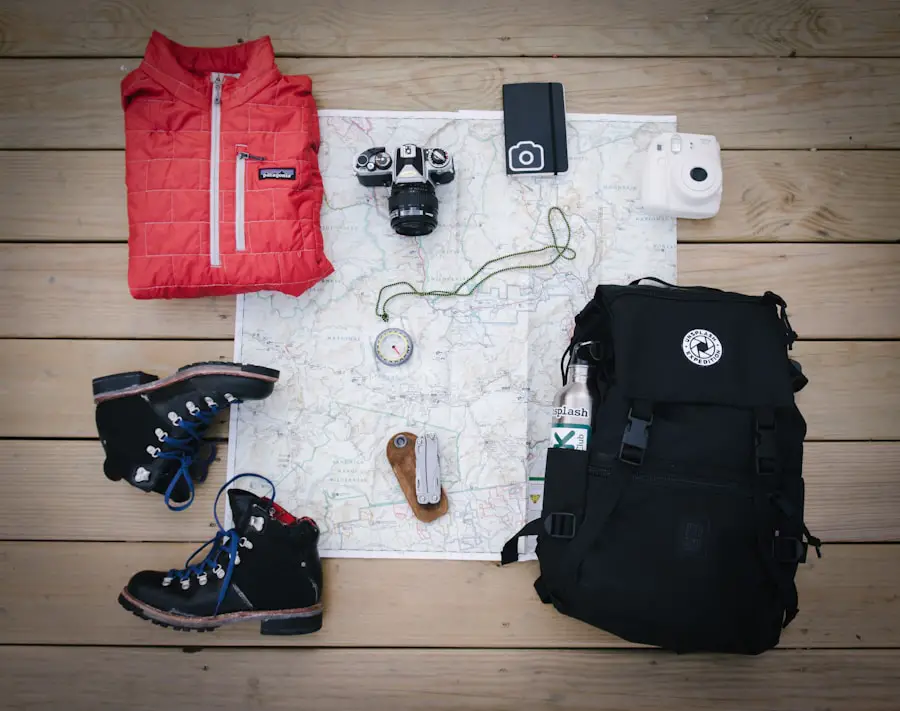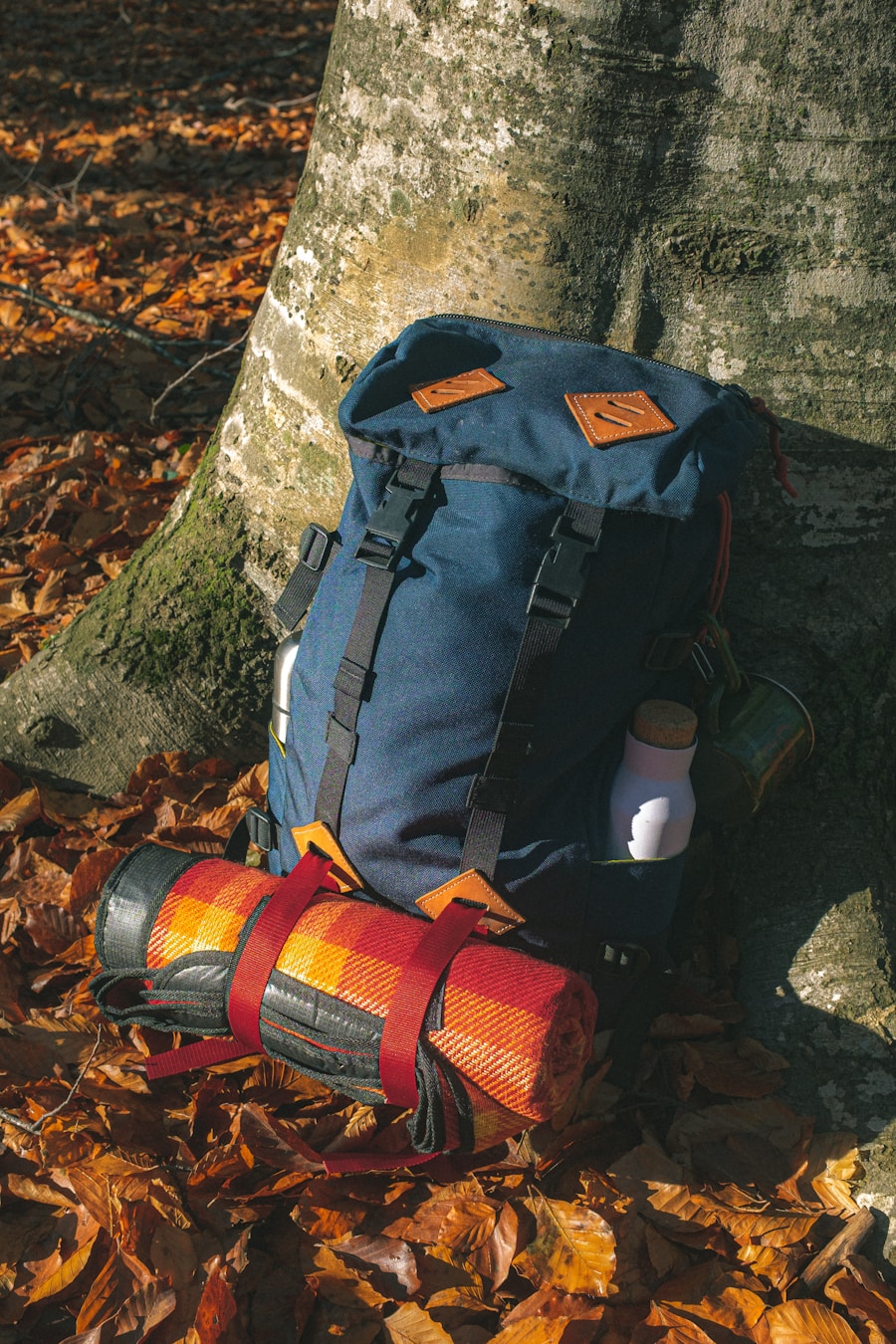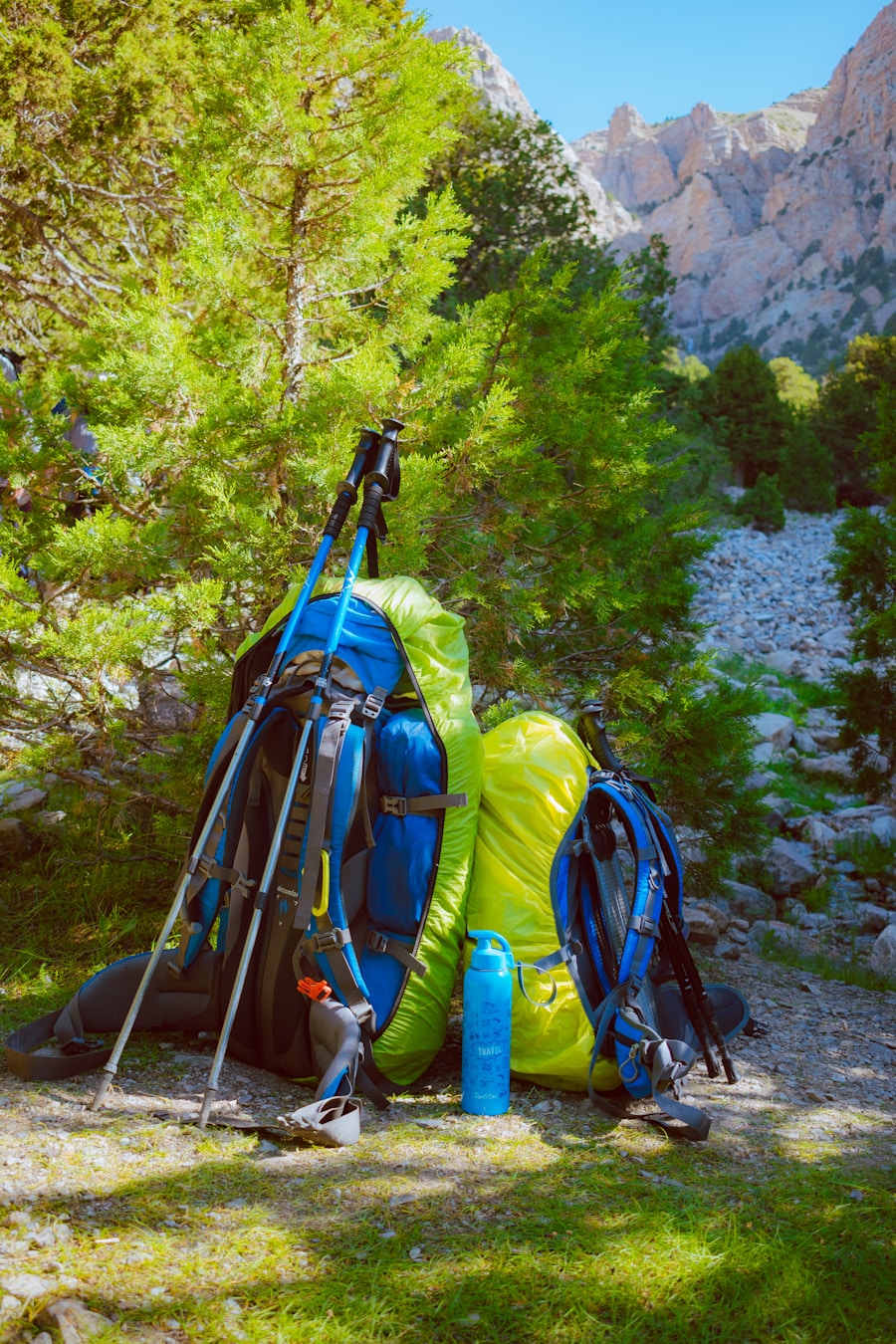Selecting the appropriate backpack is a critical first step in preparing for any outdoor adventure, whether it be a day hike or an extended trek. The right backpack not only enhances comfort but also significantly impacts your overall experience. When choosing a backpack, consider the duration of your trip, the type of terrain you will encounter, and the amount of gear you need to carry.
For day hikes, a smaller pack with a capacity of 20 to 30 liters may suffice, while multi-day excursions typically require larger packs ranging from 50 to 70 liters. Additionally, the fit of the backpack is paramount. A well-fitted backpack should sit comfortably on your back without causing strain or discomfort.
Look for adjustable straps, a padded hip belt, and a sternum strap to help distribute weight evenly across your body. Many manufacturers offer backpacks in different sizes to accommodate various torso lengths, ensuring that you can find one that fits your body type. It’s advisable to try on several models while loaded with weight to assess how they feel when fully packed.
Pay attention to features such as ventilation systems, pockets for organization, and hydration reservoir compatibility, as these can enhance your hiking experience.
Key Takeaways
- Choose a backpack with adjustable straps and proper back support for comfort and weight distribution
- Essential gear includes a first aid kit, multi-tool, headlamp, and emergency shelter
- Pack lightweight, moisture-wicking clothing and sturdy, comfortable footwear for varying weather conditions
- Organize food and water in separate compartments to prevent spills and keep items easily accessible
- Safety supplies should include a whistle, fire starter, and emergency blanket for unexpected situations
Essential Gear and Equipment
Once you have selected the right backpack, the next step is to gather essential gear and equipment tailored to your specific outdoor activity. The core items typically include a tent or shelter, sleeping bag, and sleeping pad for overnight trips. When choosing a tent, consider factors such as weight, weather resistance, and ease of setup.
Lightweight options are ideal for backpacking, while more robust models may be necessary for harsher conditions. A sleeping bag should be chosen based on the expected temperature range; down insulation offers excellent warmth-to-weight ratios but may not perform well when wet, whereas synthetic materials provide better moisture resistance. In addition to shelter and sleeping gear, cooking equipment is vital for preparing meals in the wilderness.
A compact stove, fuel canister, and lightweight cookware can make meal preparation efficient and enjoyable. Don’t forget utensils and a reliable method for cleaning up afterward. A multi-tool or knife can serve multiple purposes, from food preparation to gear repair.
Furthermore, a first aid kit is an indispensable part of your gear; it should include bandages, antiseptic wipes, pain relievers, and any personal medications you may need.
Packing Clothing and Footwear

Clothing and footwear are crucial components of your packing list that can significantly affect your comfort and safety during outdoor activities. Layering is the key principle when it comes to clothing; it allows you to adapt to changing weather conditions effectively. Start with a moisture-wicking base layer that keeps sweat away from your skin.
Merino wool or synthetic fabrics are excellent choices for this layer due to their breathability and quick-drying properties. The middle layer should provide insulation; fleece or down jackets are popular options that offer warmth without excessive bulk. Outer layers are essential for protection against wind and rain.
A waterproof and breathable shell jacket can shield you from the elements while allowing moisture from perspiration to escape. When it comes to pants, consider options that are durable yet flexible; convertible pants that zip off into shorts can be particularly versatile for varying temperatures. Footwear is equally important; choose hiking boots or shoes that provide adequate support and traction for the terrain you will encounter.
It’s advisable to break in new footwear before embarking on a long hike to prevent blisters and discomfort.
Organizing Food and Water
| Country | Population | Food Supply (kcal/person/day) | Water Access (% of population) |
|---|---|---|---|
| United States | 331,449,281 | 3,641 | 99% |
| India | 1,366,417,754 | 2,440 | 94% |
| China | 1,439,323,776 | 3,073 | 96% |
| Brazil | 213,993,437 | 3,015 | 97% |
Proper organization of food and water is essential for maintaining energy levels during outdoor activities. When planning meals, consider lightweight, non-perishable options that are easy to prepare. Freeze-dried meals are popular among backpackers due to their convenience and long shelf life; they only require boiling water for preparation.
Additionally, energy-dense snacks such as nuts, trail mix, energy bars, and jerky can provide quick boosts of energy on the trail. Water management is equally critical; staying hydrated is vital for physical performance and overall well-being. Depending on your route, you may need to carry enough water for the entire trip or plan to refill from natural sources along the way.
If you opt for the latter, ensure you have a reliable water filtration system or purification tablets to make sure your water is safe to drink. Hydration bladders with hoses can make sipping water on the go more convenient than traditional bottles, allowing you to stay hydrated without stopping frequently.
Safety and Emergency Supplies
Safety should always be a top priority when venturing into the wilderness. Carrying emergency supplies can mean the difference between a minor inconvenience and a serious situation. A well-stocked first aid kit is essential; it should include items like adhesive bandages, gauze pads, antiseptic ointment, tweezers, and a whistle for signaling in case of emergencies.
Additionally, consider carrying a fire-starting kit that includes waterproof matches or a lighter, as well as tinder materials like cotton balls or dryer lint. A headlamp or flashlight with extra batteries is crucial for navigating in low-light conditions or during emergencies. It’s also wise to carry a multi-tool or knife that can assist in various situations, from food preparation to gear repairs.
In remote areas where cell service may be unreliable, consider carrying a personal locator beacon (PLB) or satellite messenger device that allows you to send distress signals if needed. Familiarizing yourself with basic survival skills—such as building a shelter or purifying water—can also enhance your preparedness for unexpected situations.
Navigation Tools and Maps

Navigating through unfamiliar terrain requires reliable tools and resources to ensure you stay on track. While modern technology has made GPS devices and smartphone apps popular choices for navigation, it’s essential not to rely solely on electronic devices due to potential battery failure or lack of signal in remote areas. A traditional topographic map of the area you’ll be exploring is invaluable; it provides detailed information about elevation changes, trails, water sources, and landmarks.
In addition to maps, a compass is an essential tool that can help orient you in relation to your surroundings. Learning how to read a map and use a compass effectively is a skill that every outdoor enthusiast should acquire. Practice these skills before heading out on your trip so that you feel confident navigating without relying solely on technology.
Carrying both digital and physical navigation tools ensures redundancy in case one method fails.
Personal Items and Hygiene
Maintaining personal hygiene while camping or hiking is important not only for comfort but also for health reasons. Pack items such as biodegradable soap for washing dishes and yourself while minimizing environmental impact. A quick-dry towel can be useful for drying off after washing or if you encounter rain during your trip.
Additionally, consider bringing toilet paper or biodegradable wipes along with a small trowel for digging a cat hole if nature calls while you’re away from facilities. Personal items such as sunscreen and insect repellent are also essential for protecting your skin from harmful UV rays and pesky bugs that can ruin an otherwise enjoyable experience outdoors. If you wear contact lenses, ensure you have an adequate supply of solution or consider switching to glasses during your trip to simplify your routine.
A small bag for storing personal items can help keep your gear organized and easily accessible.
Tips for Efficient Packing and Weight Distribution
Efficient packing is crucial for maximizing comfort during your outdoor adventure while minimizing fatigue from carrying excess weight. Start by laying out all your gear before packing; this allows you to assess what is necessary versus what can be left behind. Use packing cubes or stuff sacks to organize items by category—clothing in one bag, cooking gear in another—making it easier to find what you need without rummaging through your entire pack.
When loading your backpack, place heavier items close to your back and near your center of gravity; this helps maintain balance while walking on uneven terrain. Lighter items can be packed towards the top or outside pockets for easy access. Strapping items like sleeping pads or tents externally can free up space inside the pack but ensure they are secured properly to avoid shifting during movement.
Finally, take time to adjust all straps once your pack is loaded; this will help distribute weight evenly across your shoulders and hips, enhancing comfort throughout your journey. By carefully considering each aspect of your packing strategy—from selecting the right backpack to organizing food and safety supplies—you can set yourself up for a successful outdoor experience that allows you to fully enjoy nature’s beauty while remaining prepared for whatever challenges may arise along the way.
When preparing for a hiking trip, it’s important to pack your bag efficiently to ensure you have everything you need without carrying unnecessary weight. One essential item to consider adding to your pack is a pair of odor-resistant merino wool travel socks, as discussed in this article. Additionally, investing in a high-quality travel camera backpack, like the ones recommended in this article, can help you safely transport your camera gear while on the trail. And for those who enjoy fishing while hiking, a compact and durable travel fishing rod, such as the ones highlighted in this article, can be a great addition to your pack. By carefully selecting the right gear and packing smart, you can have a more enjoyable and successful hiking experience.
FAQs
What should I consider when packing my hiking bag?
When packing your hiking bag, it’s important to consider the length of your hike, the weather conditions, the terrain, and the supplies you’ll need for the trip.
What are the essential items to pack in a hiking bag?
Essential items to pack in a hiking bag include water, food, a map and compass, a first aid kit, a multi-tool, extra clothing layers, a headlamp or flashlight, a fire starter, and a shelter such as a tent or tarp.
How should I organize my hiking bag?
Organize your hiking bag by placing heavier items closer to your back and towards the bottom of the bag. Keep frequently used items easily accessible and use compartments or stuff sacks to keep gear organized.
How much water should I pack for a hike?
The amount of water to pack for a hike depends on the length of the hike, the weather, and your individual hydration needs. As a general guideline, plan to drink about half a liter of water per hour of moderate activity.
What are some tips for packing a hiking bag efficiently?
To pack a hiking bag efficiently, consider the weight and size of each item, use compression sacks or packing cubes to save space, and distribute weight evenly in the bag. It’s also helpful to make a checklist and lay out all items before packing.
